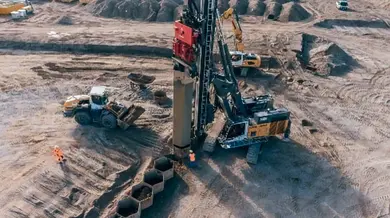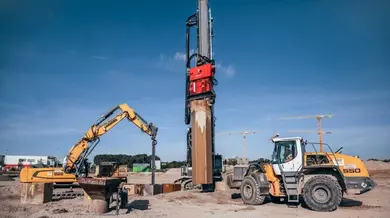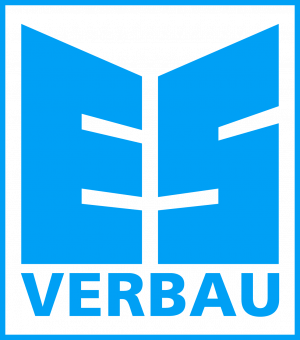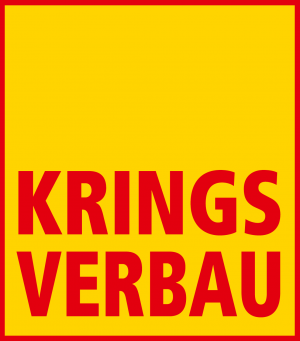A NEW DIMENSION IN SOIL CLEANUP IN INGOLSTADT
Categorie: References

HONEYCOMB METHOD: A NEW DIMENSION IN SOIL CLEANUP IN INGOLSTADT
A new 60-hectare technology park is being built in Ingolstadt, in the immediate vicinity of the Audi AG headquarters on the former Bayernoil AG refinery site. With this ambitious project, the carmaker is creating the space to develop new technologies for future mobility. But before that can happen, the AUDI IN-Campus GbR GbR joint venture (ZÜBLIN Umwelttechnik GmbH, Geiger Umweltsanierung GmbH & Co. KG, Wilhelm Geiger GmbH & Co. KG and STRABAG Umwelttechnik GmbH) must clean the soil of contaminants: In addition to protecting the Danube floodplains from runoff, a three-pronged approach involving air sparging (a process for the distance of volatile pollutants using an air stream), the honeycomb method (soil exchange process) and a soil washing plant was applied, with the MÜLLER vibratory hammer also playing an important roll.
When implementing the honeycomb method, the experts resorted to the idea of mounting a free-hanging MÜLLER MS-40 HFV vibratory hammer from terra infrastructure on a Liebherr carrier crane. Since the motor capacity of the carrier crane was sufficient to also supply the hammer, a highly mobile and powerful leader-guided pile-driving system was created. The MÜLLER vibratory hammer vibrated the steel honeycombs into the contaminated subsoil at depths of up to 12 metres more than 25,000 times. Approximately six hectares of the most heavily contaminated area were cleared of the legacy waste in this way. In view of the difficult soil conditions, the idea of modifying the free-hanging vibrator into a leader-guided alternative proved to be expedient. The combination of the MÜLLER vibration machine and the Liebherr carrier crane was so powerful that the geology with the Danube gravel no longer played a significant roll. Free-hanging vibrators use the vibratory machine's own weight to drive the soil honeycombs, which in the case of the machine used in Ingolstadt was around 14 tonnes. However, the carrier crane meant that an additional 50 tonnes could be applied if necessary.
The site was set up in June 2017, and the first honeycomb was driven into the ground in August 2018. This was the starting signal for a circuit that lasted two years: the vibratory machine always vibrated six to seven honeycombs into the ground before the crawler crane with a gripper extension and a gripper adapted to the honeycomb geometry removed the contaminated soil from the honeycomb and transported it to the washing plant. During excavation, the extension could always be turned by one sixth, so that the honeycomb could be emptied with a precise fit. After three or four excavated honeycombs, they were then filled with cleaned soil material from the washing plant using a wheel loader. Due to the groundwater level, speed was of the essence between excavation and backfilling. As soon as the honeycomb was complete, it was pulled out of the ground using a vibratory hammer and driven back into the ground at the next point. The MÜLLER vibratory hammer, now guided by a leader, was thus constantly in use and in motion on the site.
The MS-40 HFV coped excellently with the many hours of work – both in terms of heat build-up during continuous operation and stability at different speeds. MÜLLER vibratory machines are versatile – whether free hanging for smaller projects or with a leader for large projects.








